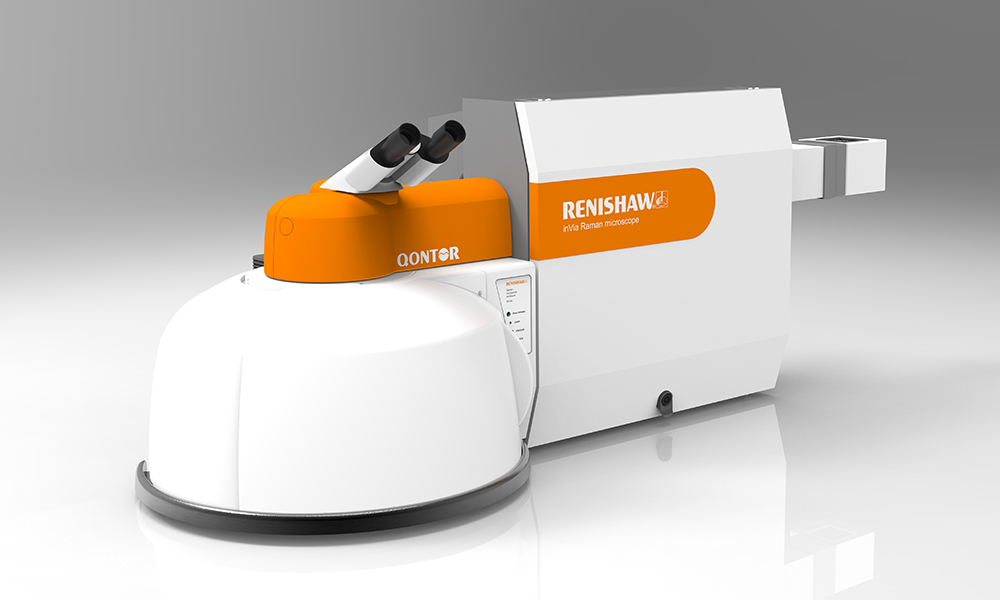Denna sida finns för närvarande inte på ditt språk. Du kan
översätta
den automatiskt
med Google Translate. Vi ansvarar inte för att tillhandahålla denna tjänst och
vi har inte kontrollerat översättningsresultaten.
Kontakta oss om du behöver ytterligare hjälp.
Case study: Raman analysis of art at the Winterthur Museum, Delaware
The Raman technique is ideal for analysing cultural heritage pieces, as Dr. Rosie A. Grayburn, associate scientist and laboratory manager, Department of Conservation at the Winterthur Museum, explains: "The ability to examine objects in situ using the sizeable chamber of the Renishaw inViaTM confocal Raman microscope meant that answering these research questions could be done non-destructively, which is of crucial importance when studying unique objects of cultural relevance."
Winterthur's scientific research and analysis laboratory uses an inVia for analysing its objects, including some important historic discoveries.
The Denig Bible
This Pennsylvanian German bible is a unique piece, made around 1784, handwritten and illustrated by Ludwig Denig. Difficult to distinguish by eye alone, Raman analysis allowed the Winterthur Museum to distinguish between two different blue colourants in its pictures, Prussian blue and indigo. The Raman analysis also revealed that in some green colourants Prussian blue was detected, which suggests that the colour was achieved as a mixture of a blue and an, as-of-yet, unknown organic yellow pigment.

Painted Textiles
Indigo dip dyeing is a centuries old technique, where a resist is used to create patterns on the textiles, that are dyed in a reduction vat. They are then removed from the vat and exposed to air so that oxidation fixes the dye into the fabric. Although extremely rare, due to the expertise required, indigo can also be directly applied manually onto textiles. Publications and curators globally have made many conflicting statements about which is the earliest record of this. It is generally cited that this was first achieved in 1738 in England using arsenic as an indigo reduction agent. However, within the Winterthur Museum's textile collection, as well as in many other textile collections around the world, there are Indian printed and painted textiles from as early as the 12th century, where according to curators and conservators the blue appears to have been applied using a brush rather than being dyed in a vat. Research fellow Alka Raman used the Raman technique to investigate these blue dyes.
For this purpose, it was first crucial to establish that the blue painted on to the cloth in the collection from India was indeed indigo. Four painted Indian textiles were identified for initial examination via in-situ Raman sampling using the Renishaw inVia Raman spectrometer with a 785 nm diode laser. A very strong peak at 1577 cm-1 was measured from blue areas of the textiles, indicating the presence of indigofera tinctora in all textile samples studied. Indigofera tinctora is the one of the main plant species that natural indigo is derived from and was used pre-20th century. This crucial breakthrough confirmed the presence of indigo in the areas deemed by curators to be painted. It allowed further investigations into the reduction methods and chemicals used to delay the re-oxidation of indigo, to enable it to be manually painted onto the textile.

Further reading
We have a whole range or articles, case studies and news stories about Raman spectroscopy.

About the inVia microscope
Discover more about how the inVia confocal microscope is suitable for your organisations applications.
More about the Winterthur Museum
Located in Delaware, in the United States of America, the Winterthur Museum showcases decorative arts popular in US culture over the centuries, and has an unparalleled collection of nearly 90,000 objects made or used in North America since 1640. The collection is displayed in a magnificent 175-room house, much as it was when the family of founder Henry Francis du Pont called it home. The house is situated within 1,000 acres of protected meadows, woodlands, ponds, and waterways. The 60-acre garden, designed by du Pont, is among one of the US' finest. The museum's graduate degree programs and extensive research library make Winterthur an important center for the study of American art and culture.
For more information about Winterthur Museum, please follow this link: www.winterthur.org
